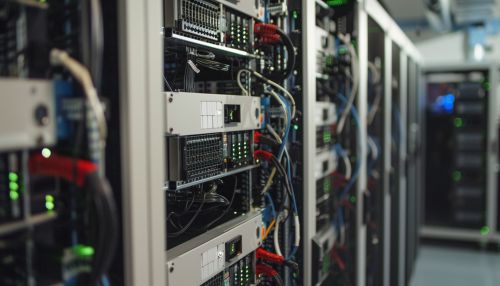Nine nines
Introduction
The term "Nine Nines" refers to a measure of reliability for a system, typically computer systems or networks. It is a metric used to define the uptime of a system, or the percentage of time that a system is operational. In this context, "Nine Nines" refers to a system that is operational 99.9999999% of the time. This equates to a downtime of approximately 31.5 seconds per year. The concept of "Nine Nines" is often used in the field of computer science, network engineering, and information technology to establish standards for system reliability and performance.


Understanding the Concept
The concept of "Nine Nines" is a part of a broader topic known as reliability engineering. This field of engineering focuses on the ability of a system or component to perform its required functions under stated conditions for a specified period of time. Reliability engineering uses statistics, probability theory, and reliability theory to calculate and improve the reliability of a system.
In the context of "Nine Nines", the focus is on the uptime of a system. Uptime is the time during which a system is operational and available for use. The opposite of uptime is downtime, which is the time during which a system is not operational. The goal of achieving "Nine Nines" is to minimize downtime and maximize uptime.
Calculating Nine Nines
The calculation of "Nine Nines" involves the use of probability theory and statistics. The basic formula for calculating uptime is:
Uptime (%) = (Total operational time / Total time) * 100
To achieve "Nine Nines" of reliability, a system would need to be operational 99.9999999% of the time. This is equivalent to a downtime of approximately 31.5 seconds per year.
Achieving Nine Nines
Achieving "Nine Nines" of reliability is a significant challenge. It requires careful design, robust fault tolerance, and meticulous maintenance.
Fault tolerance is the property that enables a system to continue operating properly in the event of the failure of some of its components. It is achieved through the use of redundant components and systems, which can take over in the event of a failure.
Maintenance is also a critical factor in achieving "Nine Nines". This includes regular system checks, updates, and repairs. Preventive maintenance can help to identify and correct potential issues before they lead to system downtime.
Limitations and Criticisms
While the concept of "Nine Nines" is a useful benchmark for system reliability, it has its limitations and has been subject to criticism. One of the main criticisms is that it is an unrealistic and unachievable goal for most systems. Even with the most advanced technology and meticulous maintenance, achieving "Nine Nines" of reliability is extremely difficult.
Another criticism is that the focus on "Nine Nines" can lead to an overemphasis on system uptime at the expense of other important factors, such as system performance and security. It is important to balance the goal of high reliability with other system requirements.
Conclusion
The concept of "Nine Nines" is a powerful tool for understanding and improving system reliability. While it is a challenging goal to achieve, it serves as a benchmark for system designers and engineers. By understanding the principles behind "Nine Nines", it is possible to design and maintain systems that offer high levels of reliability and performance.
